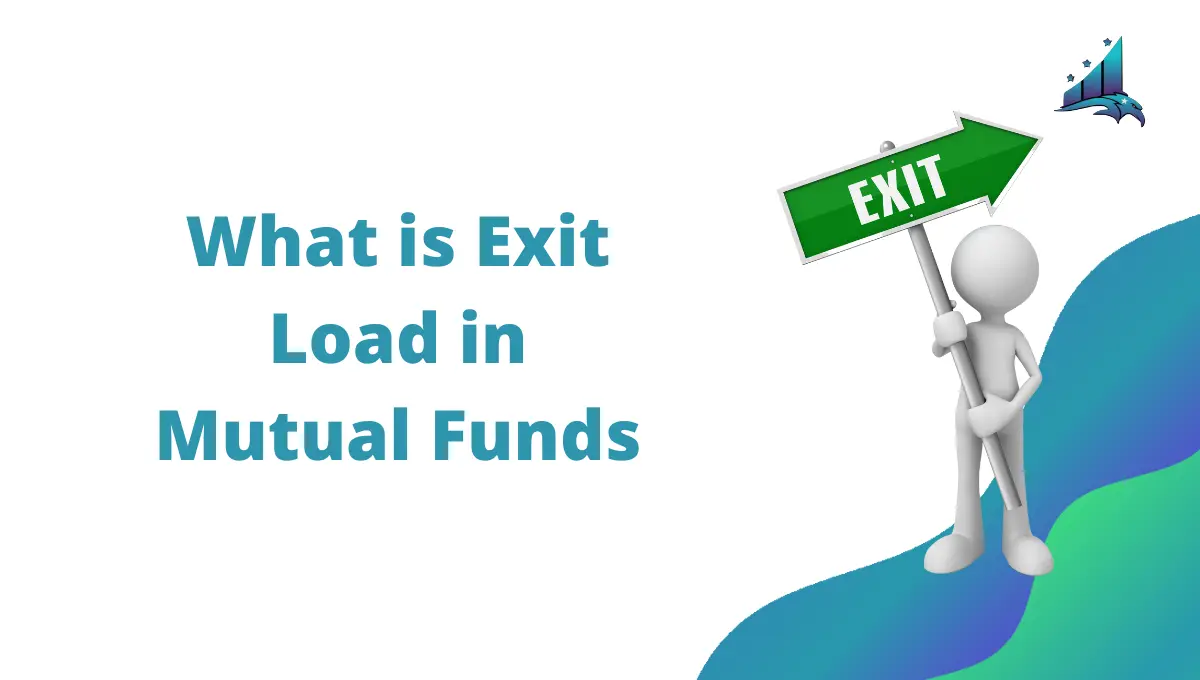What is Exit Load of a mutual fund and how is it calculated?
Exit load is a minor fee that is charged by the Asset Management Company (AMC) or the mutual fund house when an investor makes a premature redemption.

What is Exit Load of a mutual fund and how is it calculated?
Mutual funds are a popular and cost-effective way to invest in the stock market.
Before August 2009, mutual funds in India used to charge entry loads, a percentage of the investment amount paid to the financial advisor or salesperson. However, the Securities and Exchange Board of India (SEBI), the regulatory body governing mutual funds in India, abolished entry loads at that time.

After the abolition of entry loads, mutual funds in India shifted to a system of direct plans and regular plans. Immediate plans are designed for investors who directly invest in mutual funds without involving intermediaries like financial advisors. These direct plans have lower expense ratios compared to regular programs, which include distribution expenses.
Instead of charging upfront commissions or entry loads, mutual funds in India now charge expense ratios, representing the total expenses of managing the fund as a percentage of the assets under management. The expense ratio includes various costs such as fund management fees, administrative expenses, and marketing expenses. These charges are deducted from the fund’s assets on an ongoing basis.
Furthermore, when withdrawing investments from mutual funds in India, there may be exit loads or redemption fees imposed by certain funds. Exit loads are charges deducted from the redeemed amount if the investor withdraws their investment within a specified period, typically ranging from a few days to a few years. The purpose of exit loads is to discourage short-term trading and promote long-term investment.

It’s important to note that the specific charges and regulations regarding mutual funds can vary across different countries and regions. Therefore, it’s always advisable to check the latest rules and regulations set by the regulatory authorities in your respective country or region when investing in mutual funds.
The exit load is a fee charged by the Asset Management Company (AMC) or mutual fund house when an investor redeems their investment from a mutual fund before a specified period. It discourages premature or frequent redemptions, particularly in open-ended mutual funds.
Open-ended mutual funds are designed to allow investors to enter or exit the fund at any time. The mutual fund imposes the exit load to discourage investors from withdrawing their investments too soon after investing. By setting an exit load, the fund aims to promote long-term investing and discourage short-term trading, which can disrupt the fund’s management and performance.
It’s important to note that not all mutual funds charge an exit load. The presence or absence of an exit load depends on the specific mutual fund scheme. Some mutual funds may have no exit load, mainly if they are specifically designed to offer liquidity and flexibility to investors. On the other hand, certain funds may have exit loads that vary based on the duration of the investment.
The exit load is usually expressed as a percentage of the redeemed amount, and it can vary from fund to fund. The duration for which the exit load is applicable is typically mentioned in the mutual fund’s offer or scheme information document.
Investors should carefully review the terms and conditions of a mutual fund scheme before investing to understand whether an exit load is applicable and for what duration. This information is crucial in making informed investment decisions and understanding the potential costs of premature redemptions.
The exit load period and the specific percentage charged can vary for different mutual fund schemes. The details regarding the exit load, including the applicable rate and the duration of the exit load period, are typically mentioned in the mutual fund’s offer documents, Key Information Memorandum (KIM), and monthly factsheets.

Investors should carefully review these documents before investing in a mutual fund. The offer documents provide comprehensive information about the fund, including its investment objectives, strategies, risks, fees, and expenses. The KIM provides critical details about the fund, such as the exit load structure, load-free options, and other relevant information. The monthly factsheets provide updated information about the fund’s performance and any changes in fees or expenses.
By reviewing these documents, investors can understand the specific exit load provisions of the mutual fund scheme they are considering. It helps them assess the potential impact of the exit load on their investment and make informed decisions based on their investment goals and time horizon.
Investors need to read and understand these documents carefully, as they provide essential information about the terms and conditions of the mutual fund and any associated charges, including the exit load.
Exit Load Calculation
- Investment amount: Rs 50,000
- Exit load: 1% (of the last NAV)
- NAV at the time of investment: Rs 100
- Number of units purchased: 500 units (Rs 50,000 / Rs 100)
If you decide to redeem your 500 units when the NAV is Rs 110, the exit load will be calculated as follows:
Exit load = (Exit load percentage x Last NAV) x Number of units Exit load = (1% of Rs 110) x 500 units Exit load = Rs 1.10 x 500 Exit load = Rs 550
The value of your 500 units at the NAV of Rs 110 would be:
Redemption amount = NAV x Number of units Redemption amount = Rs 110 x 500 Redemption amount = Rs 55,000
However, due to the exit load, Rs 550 will be deducted from the redemption amount, resulting in the following:
Final redemption amount = Redemption amount – Exit load Final redemption amount = Rs 55,000 – Rs 550 Final redemption amount = Rs 54,450
Therefore, in this example, after deducting the exit load, the investor will receive a final redemption amount of Rs 54,450.
Equity funds primarily invest in stocks and typically have lower exit charges ranging from 0% to 1%. Some equity funds may have no exit load, allowing investors to redeem their investments without additional cost.
Debt funds, which invest in fixed-income instruments such as bonds and debentures, tend to have slightly higher exit load charges than equity funds. The exit load for debt funds can range from 0.5% to 2%. These charges are imposed to discourage premature withdrawals from the fund.
Liquid funds, which invest in short-term debt instruments with minimal risk, usually have very low or even zero exit costs. This means that investors can redeem their investments in liquid funds without incurring significant charges.
Hybrid funds, which consist of a mix of equity and debt investments, have exit load charges that can vary based on the allocation between equity and debt components within the fund. The exit load structure of hybrid funds is designed to reflect the underlying characteristics and risks associated with the specific asset allocation.
Investors must consider the type of mutual fund they invest in and review the fund’s offer documents, KIM, and factsheets to understand the applicable exit load charges. This information can help investors make informed decisions and manage their investments effectively.
It is indeed crucial for investors to carefully review the offer documents, latest factsheets, and Key Information Memorandum (KIM) of a mutual fund before making a purchase.
By thoroughly reading these documents, investors can gather essential information about the applicable exit load charges and any associated lock-in periods. Understanding these details helps investors make informed decisions aligned with their investment goals and timeframes.
Additionally, seeking guidance from a certified financial advisor can provide valuable insights and assistance in selecting mutual funds that align with an investor’s specific requirements and risk tolerance. A financial advisor can also help with proper financial planning, which includes considering factors such as exit loads to ensure investors are on track to meet their financial goals.
By being proactive and well-informed about exit loads and other relevant charges, investors can avoid unnecessary expenses and ensure their investments align with their financial objectives.




